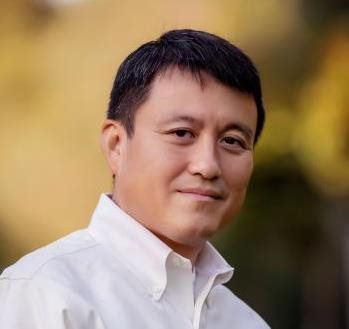
23 - 28 June, 2024
Stanford University
Stanford, California USA
Events
Shanhui Fan
Stanford University
Synthetic Dimensions in Photonics
The concept of synthetic dimensions points to new avenues for manipulating the properties of light. Here we review our work in forming synthetic frequency dimensions in dynamically modulated ring resonator structures. A ring resonator supports a set of equally spaced frequency modes. By modulating the ring at frequencies close to the spacing of the resonant modes, these modes at different frequencies can couple together to form a synthetic space along the frequency axis. Importantly, the coupling Hamiltonian of the system is entirely controlled by the modulation format and therefore can readily programmed electronically. In this talk, we discuss our use of such concept of synthetic frequency dimensions to explore novel concepts in Hermitian and non-Hermitian topological physics, and to reduce the resource requirement and enable scaling up in optical computations
About the Speaker
Shanhui Fan is the Joseph and Hon Mai Goodman Professor in the School of Engineering, a Professor of Electrical Engineering, a Professor of Applied Physics (by courtesy), and a Senior Fellow of the Precourt Institute for Energy, at the Stanford University. He received his Ph. D in 1997 in theoretical condensed matter physics from the Massachusetts Institute of Technology (MIT). His research interests are in fundamental studies of nanophotonic structures, especially photonic crystals, plasmonic structures, and meta-materials, and applications of these structures in energy and information technology applications. He has published approximately 700 refereed journal articles, has given over 400 plenary/keynote/invited talks, and holds over 70 US patents. He is a co-founder of two companies aiming to commercialize high-speed engineering computations and radiative cooling technology respectively. Prof. Fan received a National Science Foundation Career Award (2002), a David and Lucile Packard Fellowship in Science and Engineering (2003), the U. S. National Academy of Sciences W. O. Baker Award for Initiatives in Research (2007), the Adolph Lomb Medal from the Optical Society of America (2007), a Vannevar Bush Faculty Fellowship from the U. S. Department of Defense (2017), a Simons Investigator in Physics (2021), and the R. W. Wood Prize from Optica (2022). He is a member of the U. S. National Academy of Engineering, and a Fellow of several professional societies including the IEEE, the American Physical Society, the Optical Society of America, and the SPIE.

